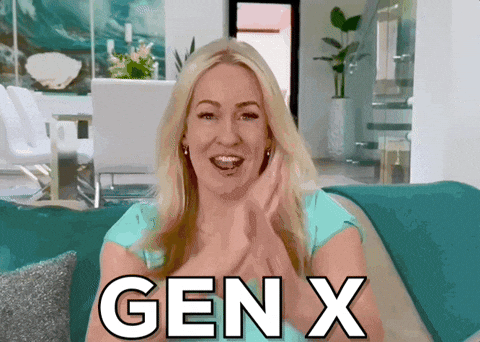Gen X is the 'most stressed' generation but studies show they're also the toughest
The 'Coolest Generation' is dealing with the rigors of middle age with their trademark adaptability.
Gen X is the most stressed generation, but also the best equipped to deal with it.
It's official: People are more stressed out than ever. Technology, a wildly unpredictable economy, political division, and changing family dynamics have us all on edge, and it's doing a number on our mental health. But there is one group that, for at least the past decade, seems to be taking on more than their fair share of the stress.
Generation X, people born between 1965 and 1979, are America's goofy middle children sandwiched between the much larger Baby Boomer and Millennial generations — both of whom get a lot more press. Gen X prides itself on being individualistic, nonconformists committed to a D.I.Y. ethic whether that means writing a punk 'zine or launching a tech start-up.
(If you just asked yourself "What's a 'zine?" you're clearly not a member ofGen X.) It's a generation marked by an aloof cool where any personal slight can be written off with a "whatever" and one that's deathly afraid of taking anything too seriously. It's a generation that was so put off by the corporate, commercial culture of the '80s it rebelled by wearing second-hand clothes and ironically embracing low-brow '70s culture.

It's the generation of hip-hop, Tiger Woods, Quentin Tarrantino, the re-birth of punk rock, John Cusak movies, and Atari. Not a bad resume at all!
A big reason Gen X is so self-reliant is that it's the generation hardest hit by divorce. According to a 2004 marketing study it "went through its all-important, formative years as one of the least parented, least nurtured generations in U.S. history."
Gen X was the first generation that experienced both parents working outside the home. But, unfortunately, at the same time, childcare centers and afterschool programs had not yet emerged to a significant extent. That's why you hear so much folklore about 80s kids being allowed to run feral throughout the neighborhood or even the whole time. This is the "come home when the streetlights come on" generation, and it shows.
Now, the "Coolest Generation" finds itself somewhere between 42 and 56 and is hitting middle age. Unfortunately, that means it's now the most stressed generation in America.
Although, in true Gen X fashion, many refuse to let anyone see they're stressed.
An extensive study by Penn State showed that stress began to hit Gen X sometime in the last decade. The 2012 study discovered that Gen X had an average stress level of 5.8 (out of ten) while Millennials (3.4) and Baby Boomers (4.4) were a lot calmer.

It's not just the anxieties of hitting middle age. An even more recent study shows that the trend hasn't changed in the last decade as all of the generations have aged. In 2021, 22% of Gen Xers admitted to daily struggles with stress followed by Millennials (17%), Gen Z (14%), and Baby Boomers (8%).
The APA's Stress in America Report from 2023 indicates that Gen Z may be coming for the throne soon, though, with major financial and loneliness issues weighing them down.

A big reason for the stress is having to take care of multiple generations. Many Gen Xers have to care for their aging parents as well as their children who are just starting to make their way in a world that's become much harder to afford. And that's to say nothing of Gen X's own money worries. Even though they're starting to reach retirement age, many members of the generation are woefully far away from having enough money saved up. One estimate says the average Gen Xer is about $400,000 short of what they'd need to comfortably retire. Talk about a stressor!
Gen X may have aged its way into the most stressful part of its life, but things could be a lot worse. There's no group of people better equipped to deal with stress.
When executives at Nike studied Gen X it found the generation's hallmarks are "flexibility," "innovation," and "adaptability." "They have developed strong survival skills and the ability to handle anything that comes their way," the study says.
Gen Xers may think that's just a bunch of corporate B.S. However, it's true. Gen X grew up during the AIDS epidemic, the end of the Cold War, the Challenger disaster, the late '80s and early '90s crime wave, 9/11, the Great Recession, COVID-19, and managed to survive after "My So-Called Life" was canceled.

We've survived tough times and we'll make it through these as well. Just got to follow the advice of Gen X's poet laureate, Tupac Shakur: "And it's crazy, it seems it'll never let up, but please, you got to keep your head up."
We can also look forward to grabbing a big box of popcorn and enjoying the massive Millennial meltdown that happens when they hit middle age. It's not going to be pretty.
This article originally appeared four years ago. It has been updated.
- Leadership expert shares the 3 reasons Gen X is ignored and it's pitch perfect ›
- Millennial shares a spot-on theory about why his generation and Gen Zers are so burned out ›
- Someone asked Twitter, ‘What's the most Gen X thing you ever did?’ and the responses were awesome. ›
- Gen Xers and boomers share how they dealt with anxiety and depression growing up ›
